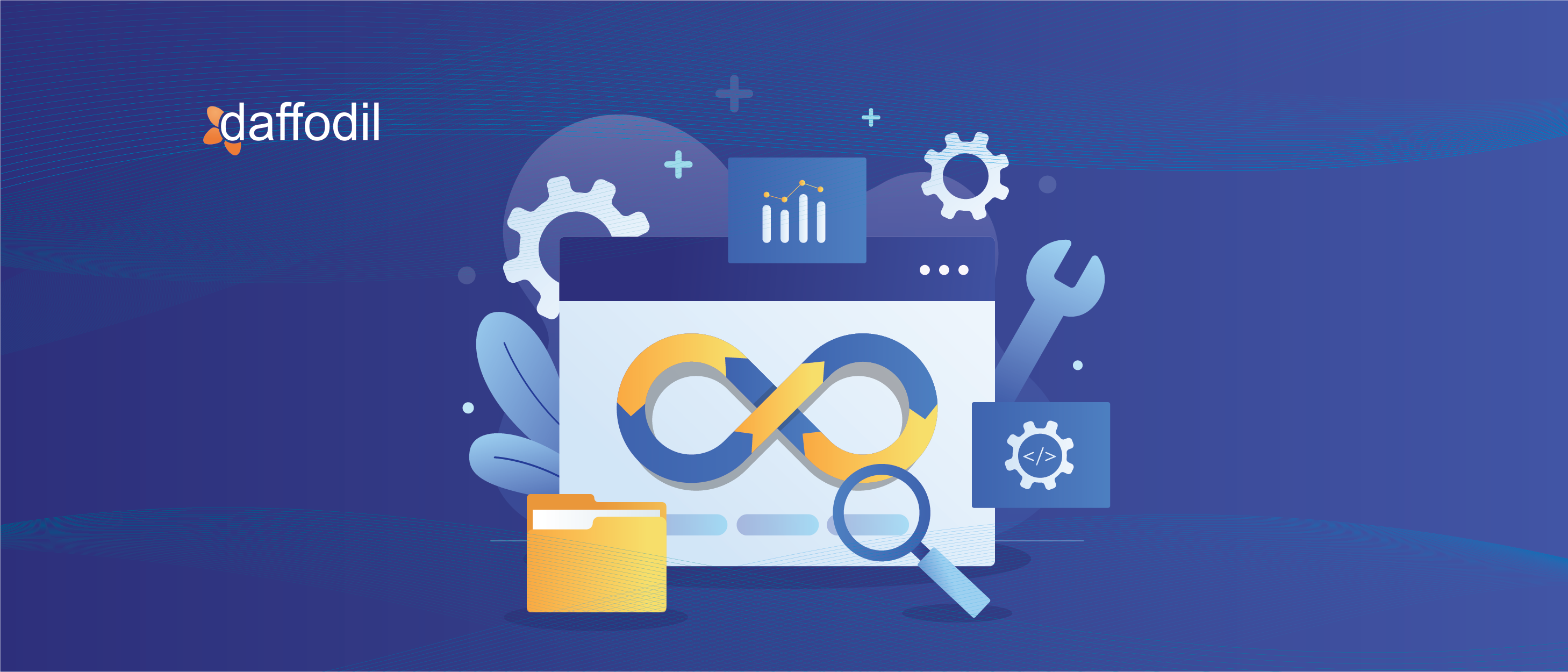
Advancing user requirements and the need for tighter security measures across the internet is making it crucial to shift from monolithic to DevOps-based software development. Additionally, microservices architecture is finding an essential role to play in this shift. Amidst all these developments, it is important to consider the need for boosting transparency through better DevOps observability for microservices.
Software development, deployment, testing, maintenance, and support has witnessed a paradigm shift in the form of the Agile and DevOps approach. Moreover, as the microservices architecture consists of loosely coupled software components or services, the implementation of DevOps principles across the Software Development Life Cycle (SDLC) goes hand in hand with it.
In this article, we will further explore how microservices factor into DevOps and the functional commonalities between the two. We will then move on to the observability of microservices powered by the DevOps approach to it.
What is the Role of Microservices in DevOps?
For software development organizations, the DevOps approach essentially breaks down the entire process into separate steps. Different development teams are then tasked with facilitating each step or service reducing the scope of development to manageable and flexible components.
Similarly, microservices also stray away from monolithic software development towards a more compartmentalized approach instead. So the distribution of responsibilities that DevOps teams implement is a great fit for software development with the microservices architecture. Following are some of the tangible benefits of combining the two development approaches:
Increased Flexibility: Addressing issues with this approach becomes more efficient. When a production bug appears in a service, the development team can fix the bug solely in the affected service without affecting the overall SDLC.
Agile Deployment: Each microservice has a dedicated database and operates independently. There is no need for the team to wait until the entire application is prepared for deployment. The pace of application delivery can be accelerated overall by having each team adhere to a pre-determined deployment schedule.
Code Reusability: Microservices allow you to separate snippets of code from one application to reuse for another application as each service of the application is loosely coupled with the other. Individual code snippets facilitating particular microservices can also be scaled separately using Docker and Kubernetes containers.
Boost in Team Productivity: As each individual service of the overarching application is assigned to a dedicated team, the teams get to focus their attention better. This allows for minimal scope for error and an overall boost in productivity.
Methods of Observability Defined by DevOps
DevOps observability refers to the practice of monitoring and analyzing the entire software delivery pipeline to gain insight into its behavior and performance. It involves collecting data from various sources, such as application logs, metrics, and tracing, and using that data to understand how the system is operating and identify areas for improvement.
Observability is a key aspect of DevOps because it enables teams to detect and resolve issues quickly, as well as to continuously improve the software delivery process. By collecting and analyzing data, teams can gain insights into how the application is behaving in production, identify potential bottlenecks, and make data-driven decisions to improve its performance.
Some key components of DevOps observability include:
1)Monitoring: This involves collecting and analyzing data from various sources, such as application logs, metrics, and tracing.
2)Metrics: Metrics are key performance indicators that help teams track the health and performance of the system over time. They can be used to identify trends and patterns that indicate potential issues.
3)Tracing: Tracing involves tracking requests as they move through the system, enabling teams to identify bottlenecks and latency issues.
4)Logging: Logging involves recording events and actions that occur within the system, allowing teams to debug issues and understand how the system is behaving.
Overall, DevOps observability is essential for enabling teams to detect and resolve issues quickly and continuously improve the software delivery process. It helps teams gain a holistic view of the system and make data-driven decisions to improve its performance.
DevOps Observability Strategies for Microservices
DevOps-based observability approaches are essential in managing and monitoring microservices in a distributed system. Here are five ways in which these approaches can work for microservices:
Centralized Monitoring: DevOps observability tools such as Prometheus and Grafana can provide centralized monitoring of microservices, enabling teams to view the health of individual microservices, as well as the overall health of the system.
Continuous Deployment: DevOps observability enables continuous deployment of microservices. When a new version of a microservice is deployed, observability tools can detect issues and roll back the deployment, ensuring that the system remains stable and functional.
Microservice Tracing: DevOps observability tools can provide detailed tracing of microservices. This is important for identifying performance issues and bottlenecks, as well as for understanding how different microservices interact with each other.
Real-time Alerting: DevOps observability tools can provide real-time alerting for critical issues in microservices. This can help teams quickly identify and resolve issues before they impact users or cause downtime.
Proactive Monitoring: DevOps observability tools enable proactive monitoring of microservices. This means that teams can detect issues before they cause problems, and take corrective action before users are impacted. This helps to improve system reliability and reduce the risk of downtime.
DevOps observability is a critical component of the microservices architecture that helps teams gain insights into the performance and behavior of their applications. By implementing observability practices, DevOps teams can monitor, measure, and analyze the different components of their microservices-based applications to identify issues and resolve them quickly.
ALSO READ: 10 Key DevOps Metrics to Manage Deployment Pipeline
DevOps Observability is Essential for Microservices
Microservices architecture offers several benefits, such as improved scalability, flexibility, and resilience. However, this comes at the cost of increased complexity, which can make it challenging to manage and monitor individual services. Observability addresses this challenge by providing a comprehensive view of the entire system, enabling teams to identify and troubleshoot issues before they escalate.
To implement DevOps observability, teams must invest in robust monitoring tools, establish clear metrics and logging practices, and implement effective alerting mechanisms. With Daffodil’s reliable DevOps expertise, you can achieve a high degree of visibility into their microservices-based applications, enabling them to make data-driven decisions and improve the overall performance and reliability of their systems. You can begin by booking a free consultation with us today.



